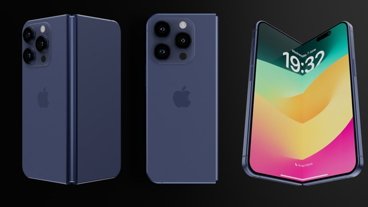Apple has updated a support document warning iPhone users that MagSafe could potentially interfere with pacemakers, defibrillators, and other medical implants that could be affected by magnets.
The magnets within the iPhone 12 series and MagSafe accessories are meant to align the wireless charging coils, as well as to keep accessories affixed to the back of the iPhone itself. While the magnets may not be strong to cause noticeable issues for regular users, people with medical conditions requiring specialized equipment may encounter problems if their iPhone gets too close.
In an update to a support page about the magnets used for MagSafe, Apple added language that warns medical devices including implanted pacemakers and defibrillators "might contain sensors that respond to magnets and radios when in close contact." Apple doesn't explain what could happen in such cases, but the worst circumstance could be the deactivation of a medical device and a user's potential death.
"To avoid any potential interactions with these devices, keep your iPhone and MagSafe accessories a safe distance away from your device," Apple suggests. The suggested distances are more than 6 inches normally, increased to more than 12 inches when performing wireless charging.
The text, spotted by MacRumors, further advises consulting with a physician and the device manufacturer for "specific guidelines" in relation to MagSafe. If users suspect an iPhone or MagSafe accessory is interfering with their medical device, Apple tells users to stop using the iPhone or accessory immediately.
The update follows after an article in the Heart Rhythm Journal from three doctors in Michigan who tested MagSafe's effects on a patient's implantable cardioverter-defibrillator. When the iPhone was brought near to the patient's chest, the implant immediately ceased working normally, by changing to a different functioning mode.
The use of a sensor that works by detecting magnetic fields is used to make an implanted device work in specific ways, such as applying a manually-triggered electrical impulse instead of one performed using the device's previously-configured settings. It seems the magnets in MagSafe are powerful enough to trigger the sensors if placed close enough.
It is typical for a device to revert back to its normal function once the magnetic field is removed, making the effect temporary in most cases. Even so, Apple recommends a doctor's visit as a precautionary measure.
There is no indication that the doctors' findings influenced Apple into making the change to the support page.
 Malcolm Owen
Malcolm Owen







-m.jpg)






 Amber Neely
Amber Neely



 Christine McKee
Christine McKee


 William Gallagher
William Gallagher


-m.jpg)






9 Comments
Would be nice if future medical devices had a standardized, secure beacon that would notify magnetic chargers and related impacted technology to auto-disable when within a prescribed proximity.
Not sure if HW designs permits, but if so, perhaps Apple could offer MagSafe disablement setting for people who have such devices.
The issue is not with the inductive charging of the MagSafe, which works the same as any other Qi charger basically. The problem is with the permanent magnets that encircle the charging coil on the handset along with the two alignment magnets situated underneath. Therefore it cannot be resolved how you suggest. I am surprised though that in this day and age they have not included any magnetic shielding for sensitive components such as the Reed switches. It would certainly be a worthwhile addition if possible.
I think this Magsafe is of little practical benefit, all things considered.
It might be nice to have in some situations but for charging I could definitely live without it.
We'll see how people make use of it though. Maybe something great will come along.
It is possible to turn off a permanent magnet if you have two permanent magnets inside the same device that can be rotated into opposing positions to cancel the magnetic field. I imagine that a phone manufacturer like Apple could implement this in their smart phones (although technical challenges would be difficult to overcome.) In that case people with medical devices could permanently disable the magnet. https://www.youtube.com/watch?v=PMma3OJUHhs It would be simpler for phone manufacturers to just offer models that don't have magnets.